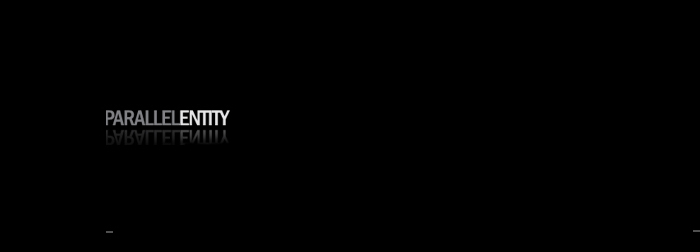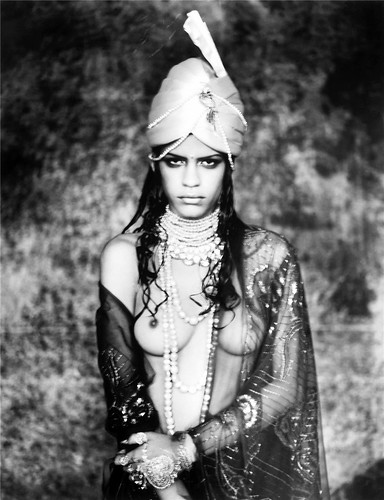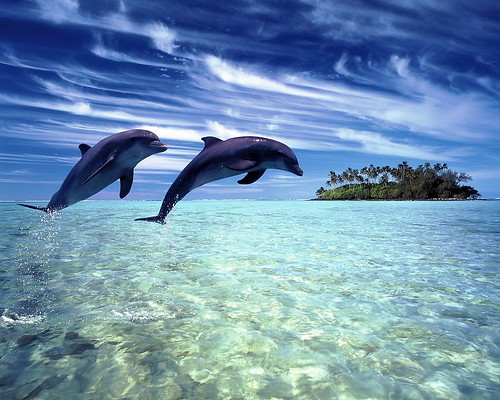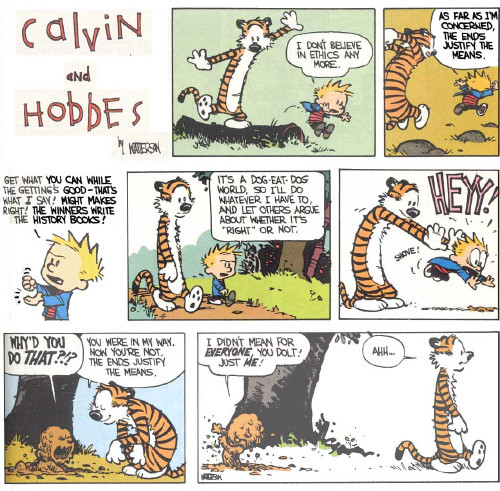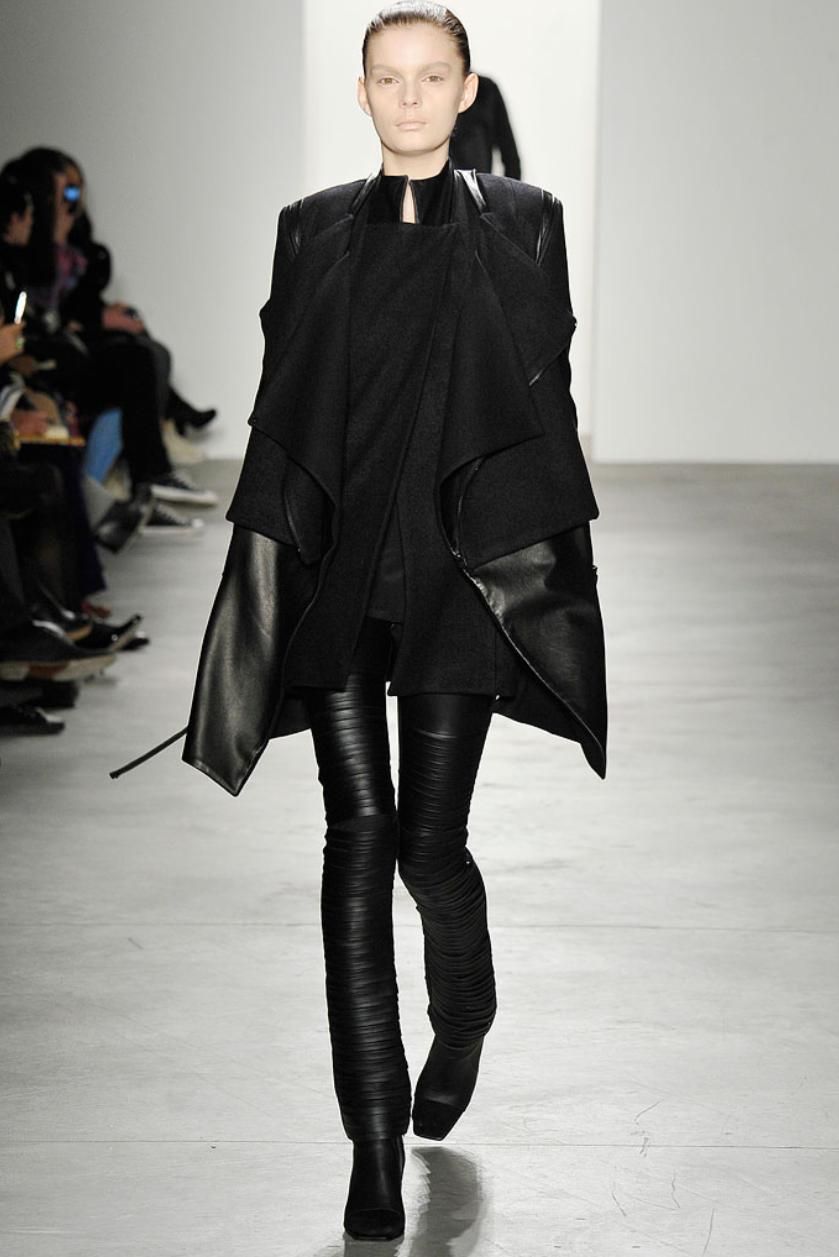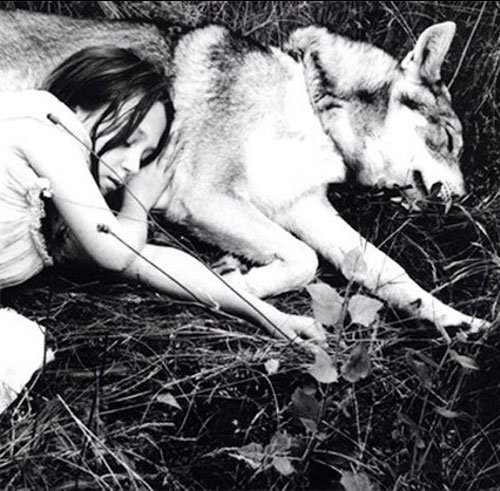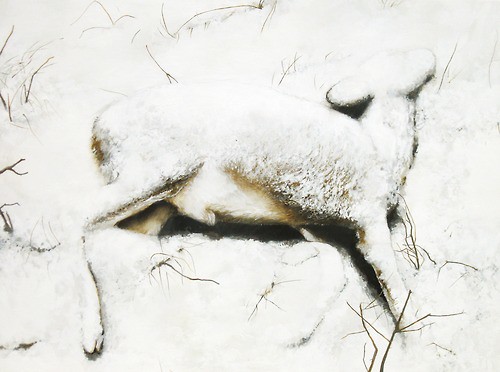2010/02/28
2010/02/27
2010/02/26
Vogue italia now has 3 zones
Vogue Italia has recently launched a trio of new websites showcasing the topics-du-jour of the fashion industry. Vogue Curvy provides a glimpse into normal and plus-size beauty, with features on Crystal Renn, Christina Hendricks and America Ferrera.
Vogue Black provides insight on beauty of color, with a headline reading "Know Your 'Fro" and profiles on Tyra Banks and Grace Jones.
Vogue Talents takes a look at up-and-coming designers and encourages users to submit their work.
2010/02/25
horizontal view
photos: JUCO
hair and make up: David Tolls
Models: Mary with FORD, Elle from Pinkerton
2010/02/24
ecofeminist ethics
"Deep ecology is a somewhat recent branch of ecological philosophy (ecosophy) that considers humankind as an integral part of its environment. The philosophy emphasizes the interdependent value of human and non-human life as well as the importance of the ecosystem and natural processes. It provides a foundation for the environmental and green movements and has led to a new system of environmental ethics.
Deep ecology's core principle is the claim that, like humanity, the living environment as a whole has the same right to live and flourish. Deep ecology describes itself as "deep" because it persists in asking deeper questions concerning "why" and "how" and thus is concerned with the fundamental philosophical questions about the impacts of human life as one part of the ecosphere, rather than with a narrow view of ecology as a branch of biological science, and aims to avoid merely anthropocentric environmentalism, which is concerned with conservation of the environment only for exploitation by and for humans purposes, which excludes the fundamental philosophy of deep ecology. Deep ecology seeks a more holistic view of the world we live in and seeks to apply to life the understanding that separate parts of the ecosystem (including humans) function as a whole.
Development
The phrase "deep ecology" was coined by the Norwegian philosopher Arne Næss in 1973,[1] and he helped give it a theoretical foundation. "For Arne Næss, ecological science, concerned with facts and logic alone, cannot answer ethical questions about how we should live. For this we need ecological wisdom. Deep ecology seeks to develop this by focusing on deep experience, deep questioning and deep commitment. These constitute an interconnected system. Each gives rise to and supports the other, whilst the entire system is, what Næss would call, an ecosophy: an evolving but consistent philosophy of being, thinking and acting in the world, that embodies ecological wisdom and harmony."[2] Næss rejected the idea that beings can be ranked according to their relative value. For example, judgments on whether an animal has an eternal soul, whether it uses reason or whether it has consciousness (or indeed higher consciousness) have all been used to justify the ranking of the human animal as superior to other animals. Næss states that from an ecological point of view "the right of all forms [of life] to live is a universal right which cannot be quantified. No single species of living being has more of this particular right to live and unfold than any other species." This metaphysical idea is elucidated in Warwick Fox's claim that we and all other beings are "aspects of a single unfolding reality".[3]. As such Deep Ecology would support the view of Aldo Leopold in his book, A Sand County Almanac that humans are "plain members of the biotic community". They also would support Leopold's "Land Ethic": "a thing is right when it tends to preserve the integrity, stability and beauty of the biotic community. It is wrong when it tends otherwise." Daniel Quinn in Ishmael, showed that an anthropocentric myth underlies our current view of the world, and a jellyfish would have an equivalent jellyfish centric view[4].
Deep ecology offers a philosophical basis for environmental advocacy which may, in turn, guide human activity against perceived self-destruction. Deep ecology and environmentalism hold that the science of ecology shows that ecosystems can absorb only limited change by humans or other dissonant influences. Further, both hold that the actions of modern civilization threaten global ecological well-being. Ecologists have described change and stability in ecological systems in various ways, including homeostasis, dynamic equilibrium, and "flux of nature".[5] Regardless of which model is most accurate, environmentalists[citation needed] contend that massive human economic activity has pushed the biosphere far from its "natural" state through reduction of biodiversity, climate change, and other influences. As a consequence, civilization is causing mass extinction. Deep ecologists hope to influence social and political change through their philosophy.
[edit] Scientific
Næss and Fox do not claim to use logic or induction to derive the philosophy directly from scientific ecology [6] but rather hold that scientific ecology directly implies the metaphysics of deep ecology, including its ideas about the self and further, that deep ecology finds scientific underpinnings in the fields of ecology and system dynamics.
In their 1985 book Deep Ecology,[7] Bill Devall and George Sessions describe a series of sources of deep ecology. They include the science of ecology itself, and cite its major contribution as the rediscovery in a modern context that "everything is connected to everything else". They point out that some ecologists and natural historians, in addition to their scientific viewpoint, have developed a deep ecological consciousness—for some a political consciousness and at times a spiritual consciousness. This is a perspective beyond the strictly human viewpoint, beyond anthropocentrism. Among the scientists they mention particularly are Rachel Carson, Aldo Leopold, John Livingston, Paul R. Ehrlich and Barry Commoner, together with Frank Fraser Darling, Charles Sutherland Elton, Eugene Odum and Paul Sears.
A further scientific source for deep ecology adduced by Devall and Sessions is the "new physics." which they describe as shattering Descartes's and Newton's vision of the universe as a machine explainable in terms of simple linear cause and effect, and instead providing a view of Nature in constant flux and the idea that observers are separate an illusion. They refer to Fritjof Capra's The Tao of Physics and The Turning Point for their characterisation of how the new physics leads to metaphysical and ecological views of interrelatedness, which, according to Capra, should make deep ecology a framework for future human societies. Devall and Sessions also credit the American poet and social critic Gary Snyder—with his devotion to Buddhism, Native American studies, the outdoors, and alternative social movements—as a major voice of wisdom in the evolution of their ideas.
The scientific version of the Gaia hypothesis was also an influence on the development of deep ecology."
en.wikipedia.org/wiki/Deep_ecology
"Ecofeminism is a social and political movement which points to the existence of considerable common ground between environmentalism and feminism,[1] with some currents linking deep ecology and feminism.[2] Ecofeminists argue that a strong parallel exists between the oppression and subordination of women in families and society and the degradation of nature through the construction of differences into conceptual binaries and ideological hierarchies that allow a systematic, however logically unsound, justification of domination ("power-over power") by subjects classed into higher-ranking categories over objects classed into lower-ranking categories (e.g. man over woman, culture over nature, white over black). They also explore the intersectionality between sexism, the domination of nature, racism, speciesism, and other characteristics of social inequality. In some of their current work, ecofeminists argue that the capitalist and patriarchal systems that predominate throughout the world reveal a triple domination of the Global South (people who live in the Third World), women, and nature.[3] This domination and exploitation of women, of poorly resourced peoples and of nature sits at the core of the ecofeminist analysis.
Although ecofeminism has been called misandrist, in proposing a patriarchy as the root cause of many world problems, its view of the oppression of minorities and the Third World recognizes not just women, but also includes most men as oppressed.
Ecofeminist analysis
Ecofeminism, or ecological feminism, is a term coined in 1974 by Françoise d'Eaubonne. It is a philosophy and movement born from the union of feminist and ecological thinking, and the belief that the social mentality that leads to the domination and oppression of women is directly connected to the social mentality that leads to the abuse of the natural environment. It combines eco-anarchism or bioregional democracy with a strong ideal of feminism. Its advocates often emphasize the importance of interrelationships between humans, non-human others (e.g., squirrels, toads), and the earth.
A central tenet in ecofeminism states that male ownership of land has led to a dominator culture (patriarchy), manifesting itself in food export, over-grazing, the tragedy of the commons, exploitation of people, and an abusive land ethic, in which animals and land are valued only as economic resources. Other ecofeminists claim that the degradation of nature contributes to the degradation of women. For example, Thomas-Slayter and Rocheleau detail how in Kenya, the capitalist driven export economy has caused most of the agriculturally productive land to be used for monoculture cash crops. This led to intensification of pesticide use, resource depletion and relocation of subsistence farmers, especially women, to the hillsides and less productive land, where their deforestation and cultivation led to soil erosion, furthering the environmental degradation that hurts their own productivity (Thoma-Slayter, B. and D. Rocheleau. (1995) Gender, Environment and Development in Kenya: A Grassroots Perspective).
Vandana Shiva makes it clear that one of the missions of ecofeminism is to redefine how societies look at productivity and activity of both women and nature who have mistakenly been deemed passive, allowing for them both to be ill-used. For example, she draws a picture of a stream in a forest. According to her, in our society it is perceived as unproductive if it is simply there, fulfilling the needs for water of women’s families and communities, until engineers come along and tinker with it, perhaps damming it and using it for generating hydropower. The same is true of a forest unless it is planted with a monoculture plantation of a commercial species. A forest may very well be productive, protecting groundwater, creating oxygen, allowing villagers to harvest fruit, fuel, and craft materials, and creating a habitat for animals that are also a valuable resource. However, for many, if it is not for export or contribution to GDP, without a dollar value attached, it cannot be seen as a productive resource (4 Staying Alive: Women, Ecology and Development 1988).
Some ecofeminists point to the linguistic links between oppression of women and land, such as the terms, "rape the land", "tame nature," and "reap nature's bounty." Terms also express nature as feminine (using the pronoun "she" and the term "Mother Nature") and women as "wild" and "untamed" (like nature). Ecofeminists also criticize Western lifestyle choices, such as consuming food that has travelled thousands of miles and playing sports (such as golf and downhill skiing) which inherently require ecological destruction.
Feminist and social ecologist Janet Biehl has criticized ecofeminism as idealist, focusing too much on the idea of a mystical connection with nature and not enough on the actual conditions of women. However, this line of criticism may not apply to many ecofeminists who reject both mysticism and essentialist ideas about the connection between women and nature. This antiessentialist ecofeminism has become more prominent since the early 1990s [1] : it has an epistemological analysis of the Enlightenment,[4] places the spirituality in immanent world and then practices modern activism.[5] The materialist ecofeminism discuss economical and political issues and can use metaphorically the link of Great mother earth or Gaia (while the idealistic tendency uses it literally).[6]
[edit] Views on technology
Françoise d'Eaubonne proposed a cooperative system in small unities (villages) with autonomization, without alienating technology. With ecofeminist ideals and pagan practices,[5] these projects are sometimes seen as a form of primitivism. However, while some ecofeminists see technology as inherently alienating, many see a substantial role for modern technologies in the creation and operation of such villages. A number of ecofeminists advocate the use of technologies such as solar power[7] as a way to stay off 'the grid', which they regard as more important than relying upon poisonous industrial processes or materials. The ecological movement is itself split on issues like this. However, it is likely that an intermediate technology, appropriate technology, would be preferred in general if an ecofeminist movement sought to spread into developing nations quickly.
[edit] Views on human/animal relations
One strand of ecofeminism, associated with Carol J Adams and Marti Kheel has consistently argued that veganism is an important part of ecofeminist ethics. Other positions represented by Val Plumwood and Karen J. Warren argue for a contextual vegetarianism which ties animal ethics more to material and social context. Yet other ecofeminists place ethical emphasis on ecosystem health at the expense of valuing individual animals or stipulating vegetarianism or veganism."
en.wikipedia.org/wiki/Ecofeminism
Deep ecology's core principle is the claim that, like humanity, the living environment as a whole has the same right to live and flourish. Deep ecology describes itself as "deep" because it persists in asking deeper questions concerning "why" and "how" and thus is concerned with the fundamental philosophical questions about the impacts of human life as one part of the ecosphere, rather than with a narrow view of ecology as a branch of biological science, and aims to avoid merely anthropocentric environmentalism, which is concerned with conservation of the environment only for exploitation by and for humans purposes, which excludes the fundamental philosophy of deep ecology. Deep ecology seeks a more holistic view of the world we live in and seeks to apply to life the understanding that separate parts of the ecosystem (including humans) function as a whole.
Development
The phrase "deep ecology" was coined by the Norwegian philosopher Arne Næss in 1973,[1] and he helped give it a theoretical foundation. "For Arne Næss, ecological science, concerned with facts and logic alone, cannot answer ethical questions about how we should live. For this we need ecological wisdom. Deep ecology seeks to develop this by focusing on deep experience, deep questioning and deep commitment. These constitute an interconnected system. Each gives rise to and supports the other, whilst the entire system is, what Næss would call, an ecosophy: an evolving but consistent philosophy of being, thinking and acting in the world, that embodies ecological wisdom and harmony."[2] Næss rejected the idea that beings can be ranked according to their relative value. For example, judgments on whether an animal has an eternal soul, whether it uses reason or whether it has consciousness (or indeed higher consciousness) have all been used to justify the ranking of the human animal as superior to other animals. Næss states that from an ecological point of view "the right of all forms [of life] to live is a universal right which cannot be quantified. No single species of living being has more of this particular right to live and unfold than any other species." This metaphysical idea is elucidated in Warwick Fox's claim that we and all other beings are "aspects of a single unfolding reality".[3]. As such Deep Ecology would support the view of Aldo Leopold in his book, A Sand County Almanac that humans are "plain members of the biotic community". They also would support Leopold's "Land Ethic": "a thing is right when it tends to preserve the integrity, stability and beauty of the biotic community. It is wrong when it tends otherwise." Daniel Quinn in Ishmael, showed that an anthropocentric myth underlies our current view of the world, and a jellyfish would have an equivalent jellyfish centric view[4].
Deep ecology offers a philosophical basis for environmental advocacy which may, in turn, guide human activity against perceived self-destruction. Deep ecology and environmentalism hold that the science of ecology shows that ecosystems can absorb only limited change by humans or other dissonant influences. Further, both hold that the actions of modern civilization threaten global ecological well-being. Ecologists have described change and stability in ecological systems in various ways, including homeostasis, dynamic equilibrium, and "flux of nature".[5] Regardless of which model is most accurate, environmentalists[citation needed] contend that massive human economic activity has pushed the biosphere far from its "natural" state through reduction of biodiversity, climate change, and other influences. As a consequence, civilization is causing mass extinction. Deep ecologists hope to influence social and political change through their philosophy.
[edit] Scientific
Næss and Fox do not claim to use logic or induction to derive the philosophy directly from scientific ecology [6] but rather hold that scientific ecology directly implies the metaphysics of deep ecology, including its ideas about the self and further, that deep ecology finds scientific underpinnings in the fields of ecology and system dynamics.
In their 1985 book Deep Ecology,[7] Bill Devall and George Sessions describe a series of sources of deep ecology. They include the science of ecology itself, and cite its major contribution as the rediscovery in a modern context that "everything is connected to everything else". They point out that some ecologists and natural historians, in addition to their scientific viewpoint, have developed a deep ecological consciousness—for some a political consciousness and at times a spiritual consciousness. This is a perspective beyond the strictly human viewpoint, beyond anthropocentrism. Among the scientists they mention particularly are Rachel Carson, Aldo Leopold, John Livingston, Paul R. Ehrlich and Barry Commoner, together with Frank Fraser Darling, Charles Sutherland Elton, Eugene Odum and Paul Sears.
A further scientific source for deep ecology adduced by Devall and Sessions is the "new physics." which they describe as shattering Descartes's and Newton's vision of the universe as a machine explainable in terms of simple linear cause and effect, and instead providing a view of Nature in constant flux and the idea that observers are separate an illusion. They refer to Fritjof Capra's The Tao of Physics and The Turning Point for their characterisation of how the new physics leads to metaphysical and ecological views of interrelatedness, which, according to Capra, should make deep ecology a framework for future human societies. Devall and Sessions also credit the American poet and social critic Gary Snyder—with his devotion to Buddhism, Native American studies, the outdoors, and alternative social movements—as a major voice of wisdom in the evolution of their ideas.
The scientific version of the Gaia hypothesis was also an influence on the development of deep ecology."
en.wikipedia.org/wiki/Deep_ecology
"Ecofeminism is a social and political movement which points to the existence of considerable common ground between environmentalism and feminism,[1] with some currents linking deep ecology and feminism.[2] Ecofeminists argue that a strong parallel exists between the oppression and subordination of women in families and society and the degradation of nature through the construction of differences into conceptual binaries and ideological hierarchies that allow a systematic, however logically unsound, justification of domination ("power-over power") by subjects classed into higher-ranking categories over objects classed into lower-ranking categories (e.g. man over woman, culture over nature, white over black). They also explore the intersectionality between sexism, the domination of nature, racism, speciesism, and other characteristics of social inequality. In some of their current work, ecofeminists argue that the capitalist and patriarchal systems that predominate throughout the world reveal a triple domination of the Global South (people who live in the Third World), women, and nature.[3] This domination and exploitation of women, of poorly resourced peoples and of nature sits at the core of the ecofeminist analysis.
Although ecofeminism has been called misandrist, in proposing a patriarchy as the root cause of many world problems, its view of the oppression of minorities and the Third World recognizes not just women, but also includes most men as oppressed.
Ecofeminist analysis
Ecofeminism, or ecological feminism, is a term coined in 1974 by Françoise d'Eaubonne. It is a philosophy and movement born from the union of feminist and ecological thinking, and the belief that the social mentality that leads to the domination and oppression of women is directly connected to the social mentality that leads to the abuse of the natural environment. It combines eco-anarchism or bioregional democracy with a strong ideal of feminism. Its advocates often emphasize the importance of interrelationships between humans, non-human others (e.g., squirrels, toads), and the earth.
A central tenet in ecofeminism states that male ownership of land has led to a dominator culture (patriarchy), manifesting itself in food export, over-grazing, the tragedy of the commons, exploitation of people, and an abusive land ethic, in which animals and land are valued only as economic resources. Other ecofeminists claim that the degradation of nature contributes to the degradation of women. For example, Thomas-Slayter and Rocheleau detail how in Kenya, the capitalist driven export economy has caused most of the agriculturally productive land to be used for monoculture cash crops. This led to intensification of pesticide use, resource depletion and relocation of subsistence farmers, especially women, to the hillsides and less productive land, where their deforestation and cultivation led to soil erosion, furthering the environmental degradation that hurts their own productivity (Thoma-Slayter, B. and D. Rocheleau. (1995) Gender, Environment and Development in Kenya: A Grassroots Perspective).
Vandana Shiva makes it clear that one of the missions of ecofeminism is to redefine how societies look at productivity and activity of both women and nature who have mistakenly been deemed passive, allowing for them both to be ill-used. For example, she draws a picture of a stream in a forest. According to her, in our society it is perceived as unproductive if it is simply there, fulfilling the needs for water of women’s families and communities, until engineers come along and tinker with it, perhaps damming it and using it for generating hydropower. The same is true of a forest unless it is planted with a monoculture plantation of a commercial species. A forest may very well be productive, protecting groundwater, creating oxygen, allowing villagers to harvest fruit, fuel, and craft materials, and creating a habitat for animals that are also a valuable resource. However, for many, if it is not for export or contribution to GDP, without a dollar value attached, it cannot be seen as a productive resource (4 Staying Alive: Women, Ecology and Development 1988).
Some ecofeminists point to the linguistic links between oppression of women and land, such as the terms, "rape the land", "tame nature," and "reap nature's bounty." Terms also express nature as feminine (using the pronoun "she" and the term "Mother Nature") and women as "wild" and "untamed" (like nature). Ecofeminists also criticize Western lifestyle choices, such as consuming food that has travelled thousands of miles and playing sports (such as golf and downhill skiing) which inherently require ecological destruction.
Feminist and social ecologist Janet Biehl has criticized ecofeminism as idealist, focusing too much on the idea of a mystical connection with nature and not enough on the actual conditions of women. However, this line of criticism may not apply to many ecofeminists who reject both mysticism and essentialist ideas about the connection between women and nature. This antiessentialist ecofeminism has become more prominent since the early 1990s [1] : it has an epistemological analysis of the Enlightenment,[4] places the spirituality in immanent world and then practices modern activism.[5] The materialist ecofeminism discuss economical and political issues and can use metaphorically the link of Great mother earth or Gaia (while the idealistic tendency uses it literally).[6]
[edit] Views on technology
Françoise d'Eaubonne proposed a cooperative system in small unities (villages) with autonomization, without alienating technology. With ecofeminist ideals and pagan practices,[5] these projects are sometimes seen as a form of primitivism. However, while some ecofeminists see technology as inherently alienating, many see a substantial role for modern technologies in the creation and operation of such villages. A number of ecofeminists advocate the use of technologies such as solar power[7] as a way to stay off 'the grid', which they regard as more important than relying upon poisonous industrial processes or materials. The ecological movement is itself split on issues like this. However, it is likely that an intermediate technology, appropriate technology, would be preferred in general if an ecofeminist movement sought to spread into developing nations quickly.
[edit] Views on human/animal relations
One strand of ecofeminism, associated with Carol J Adams and Marti Kheel has consistently argued that veganism is an important part of ecofeminist ethics. Other positions represented by Val Plumwood and Karen J. Warren argue for a contextual vegetarianism which ties animal ethics more to material and social context. Yet other ecofeminists place ethical emphasis on ecosystem health at the expense of valuing individual animals or stipulating vegetarianism or veganism."
en.wikipedia.org/wiki/Ecofeminism
2010/02/23
Mirror
Interesting new film by Jennifer Venditi as vehicle for the new look book for Rachel Roy.
"Rachel Roy, who commissioned Jennifer Venditti to create Miroir, an atmospheric short film showcasing her Spring 2010 Rachel Rachel Roy collection, inspired by the breezy chic of French art house flicks"
I'm very interested in Roy's efforts and actions to position herself as very mainstream designer in America, this time by bringing a whimsical frenchy driven narrative in a Brooklyn neighborhood.
2010/02/22
Scientists say dolphins should be treated as 'non-human persons'
Dolphins have been declared the world’s second most intelligent creatures after humans, with scientists suggesting they are so bright that they should be treated as “non-human persons”.
Studies into dolphin behaviour have highlighted how similar their communications are to those of humans and that they are brighter than chimpanzees. These have been backed up by anatomical research showing that dolphin brains have many key features associated with high intelligence.
The researchers argue that their work shows it is morally unacceptable to keep such intelligent animals in amusement parks or to kill them for food or by accident when fishing. Some 300,000 whales, dolphins and porpoises die in this way each year.
“Many dolphin brains are larger than our own and second in mass only to the human brain when corrected for body size,” said Lori Marino, a zoologist at Emory University in Atlanta, Georgia, who has used magnetic resonance imaging scans to map the brains of dolphin species and compare them with those of primates.
“The neuroanatomy suggests psychological continuity between humans and dolphins and has profound implications for the ethics of human-dolphin interactions,” she added.
Dolphins have long been recognised as among the most intelligent of animals but many researchers had placed them below chimps, which some studies have found can reach the intelligence levels of three-year-old children. Recently, however, a series of behavioural studies has suggested that dolphins, especially species such as the bottlenose, could be the brighter of the two. The studies show how dolphins have distinct personalities, a strong sense of self and can think about the future.
It has also become clear that they are “cultural” animals, meaning that new types of behaviour can quickly be picked up by one dolphin from another.
In one study, Diana Reiss, professor of psychology at Hunter College, City University of New York, showed that bottlenose dolphins could recognise themselves in a mirror and use it to inspect various parts of their bodies, an ability that had been thought limited to humans and great apes.
In another, she found that captive animals also had the ability to learn a rudimentary symbol-based language."
source
Studies into dolphin behaviour have highlighted how similar their communications are to those of humans and that they are brighter than chimpanzees. These have been backed up by anatomical research showing that dolphin brains have many key features associated with high intelligence.
The researchers argue that their work shows it is morally unacceptable to keep such intelligent animals in amusement parks or to kill them for food or by accident when fishing. Some 300,000 whales, dolphins and porpoises die in this way each year.
“Many dolphin brains are larger than our own and second in mass only to the human brain when corrected for body size,” said Lori Marino, a zoologist at Emory University in Atlanta, Georgia, who has used magnetic resonance imaging scans to map the brains of dolphin species and compare them with those of primates.
“The neuroanatomy suggests psychological continuity between humans and dolphins and has profound implications for the ethics of human-dolphin interactions,” she added.
Dolphins have long been recognised as among the most intelligent of animals but many researchers had placed them below chimps, which some studies have found can reach the intelligence levels of three-year-old children. Recently, however, a series of behavioural studies has suggested that dolphins, especially species such as the bottlenose, could be the brighter of the two. The studies show how dolphins have distinct personalities, a strong sense of self and can think about the future.
It has also become clear that they are “cultural” animals, meaning that new types of behaviour can quickly be picked up by one dolphin from another.
In one study, Diana Reiss, professor of psychology at Hunter College, City University of New York, showed that bottlenose dolphins could recognise themselves in a mirror and use it to inspect various parts of their bodies, an ability that had been thought limited to humans and great apes.
In another, she found that captive animals also had the ability to learn a rudimentary symbol-based language."
source
2010/02/21
2010/02/20
2010/02/18
Feminine landscape
Monte St Angelo Subway Station
by Amanda Levete Architects and Anish Kapoor
November 20th, 2009
Amazing organic femininity merging into the landscape!
Take that obelisks!
2010/02/17
2010/02/16
2010/02/14
2010/02/13
Sergei Parajanov- Armenian master
A revolutionary of the visual arts: sublime use of color, iconographic characters, compositions and above all forceful message of cultural transgressions.
A link to one of his greatest movies: " the color of pomegranates"
2010/02/12
2010/02/11
Dan Perjovschi
Dan Perjovschi mixes drawing, cartoon and graffiti that comment on current political, social or cultural issues. Over the past decade he created works drawn directly on the walls of museums and art spaces, most recently in the Museum of Modern Art in New York. Dan Perjovschi (born 1961 in Sibiu, Romania) lives and works in Bucharest. Opening reception, February 1, 2008.
2010/02/09
2010/02/04
Deja- Sidestepper
Sidestepper takes latin rhythms to a singular encounter with dub and electronic music, where drum and bass, dancehall and hip hop meet with their Latin cousins. The band unites electronic trance with caribbean trance in a timeless and collective party, they puts the 'music' into 'dance music'.
Sidestepper has a reputation as a great live band; they bring spontaneity, joy and Colombian passion, promising a big party that goes all the way from the stage to the dance floor.
Subscribe to:
Posts (Atom)
Blog

- MARIA H
- Compilation of aesthetic manifestations beyond compliance, bring us emancipation.
Archive
-
▼
10
(186)
-
▼
Feb 2010
(49)
- Million Dollar Hotel
- Omahyra Mota / Ellen von Unwerth
- , originally uploaded by parallel entity.
- , originally uploaded by parallel entity.
- McGinley / Swinton
- Vogue italia now has 3 zones
- horizontal view
- ecofeminist ethics
- Gustave Dore Les saltimbanques -1874
- Mirror
- Scientists say dolphins should be treated as 'non-...
- Dali playing
- Federico Garcia Lorca
- Koolhaas HouseLife
- Caribou
- apricot
- Jen Ray Amazons
- Calvin and Hobbes on ethics
- Found image : down under
- polina kouklina
- Jacques Dequeker
- , originally uploaded by parallel entity.
- Editorial: Enemy
- Feminine landscape
- The Row
- .
- , originally uploaded by parallel entity.
- Mathew Ames FW2010
- , originally uploaded by parallel entity.
- , originally uploaded by parallel entity.
- girly is goodness
- Crochet animals
- , originally uploaded by parallel entity.
- , originally uploaded by parallel entity.
- Starry
- Rad Hourani: Somewhere between Owens and Margiela
- No title
- , originally uploaded by parallel entity.
- the color of the pomegranates- Parajanov
- Sergei Parajanov- Armenian master
- Draco Rosa nostalgia
- Chanel Cruise 2010
- Dan Perjovschi
- domesticated underwear
- sad
- , originally uploaded by maquisin.
- dormant
- Deja- Sidestepper
- Augmented stuff perception
-
▼
Feb 2010
(49)
